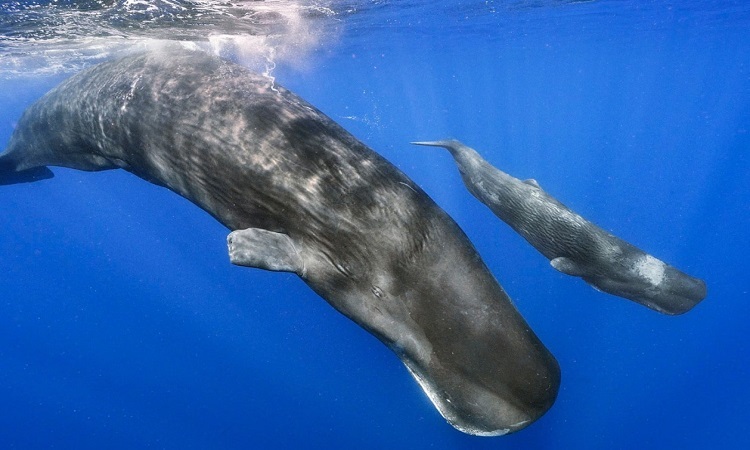Dominica Scientists from the CETI project witnessed a baby sperm whale emerging from its mother's womb and being led by the pod as it was born.
The birth of a baby sperm whale. Video : CETI
The last time scientists observed a sperm whale giving birth was in 1986, and there were no audio or video recordings of the event. New footage of sperm whales giving birth could provide new insights for researchers. During a routine observation off the coast of Dominica in July 2023, Shane Gero, the CETI project leader, witnessed the extremely rare birth of a sperm whale. Using advanced technology, they collected live images of the event for study, according to National Geographic .
Gero was tracking a mother sperm whale named Rounder, who had an older calf named Accra. By following the whale’s calls, the team came across 11 sperm whales lined up facing the same direction, trying to stay as quiet as possible as the birth took place.
The team set out on two boats equipped with special microphones suspended from the bottom. They deployed two drones to film the whales for 10 to 15 minutes. When they heard the whales calling, they were initially confused. Marine mammals can sometimes come together to mate. But this time, a tiny sperm whale calf popped its head up. The microphones picked up the chorus of the other sperm whales in the pod. They lifted the calf to the surface to help it breathe and keep it afloat. The calf’s tail was still curled up in a womb-like position, so it couldn’t swim well.
Scientists are not sure what sex the baby is, but Gero hopes it is female. The team will watch the whales carry the calf for several hours to make sure it can maintain its balance. Sperm whales have one of the longest gestation periods in the animal kingdom (18 months) and usually give birth to just one calf at a time.
With males reaching up to 60 feet (18 meters) in length, sperm whales remain a mystery. It wasn’t until 1957 that researchers learned that sperm whales make sounds. Now, scientists at the CETI project are analyzing recordings of pods of sperm whales giving birth. This kind of information is crucial to understanding a species that is vulnerable to ocean pollution and ship collisions.
Through recording and analysis of the calls, the CETI project aims to fully decipher the language of sperm whales. Gero and his colleagues have focused their research primarily around Dominica, home to an estimated 35 families of sperm whales. There are fewer than 500 individuals in the Eastern Caribbean, mostly adult females with a few calves.
An Khang (According to National Geographic )
Source link



























![[Photo] National Assembly Chairman attends the seminar "Building and operating an international financial center and recommendations for Vietnam"](https://vphoto.vietnam.vn/thumb/1200x675/vietnam/resource/IMAGE/2025/7/28/76393436936e457db31ec84433289f72)










































































Comment (0)